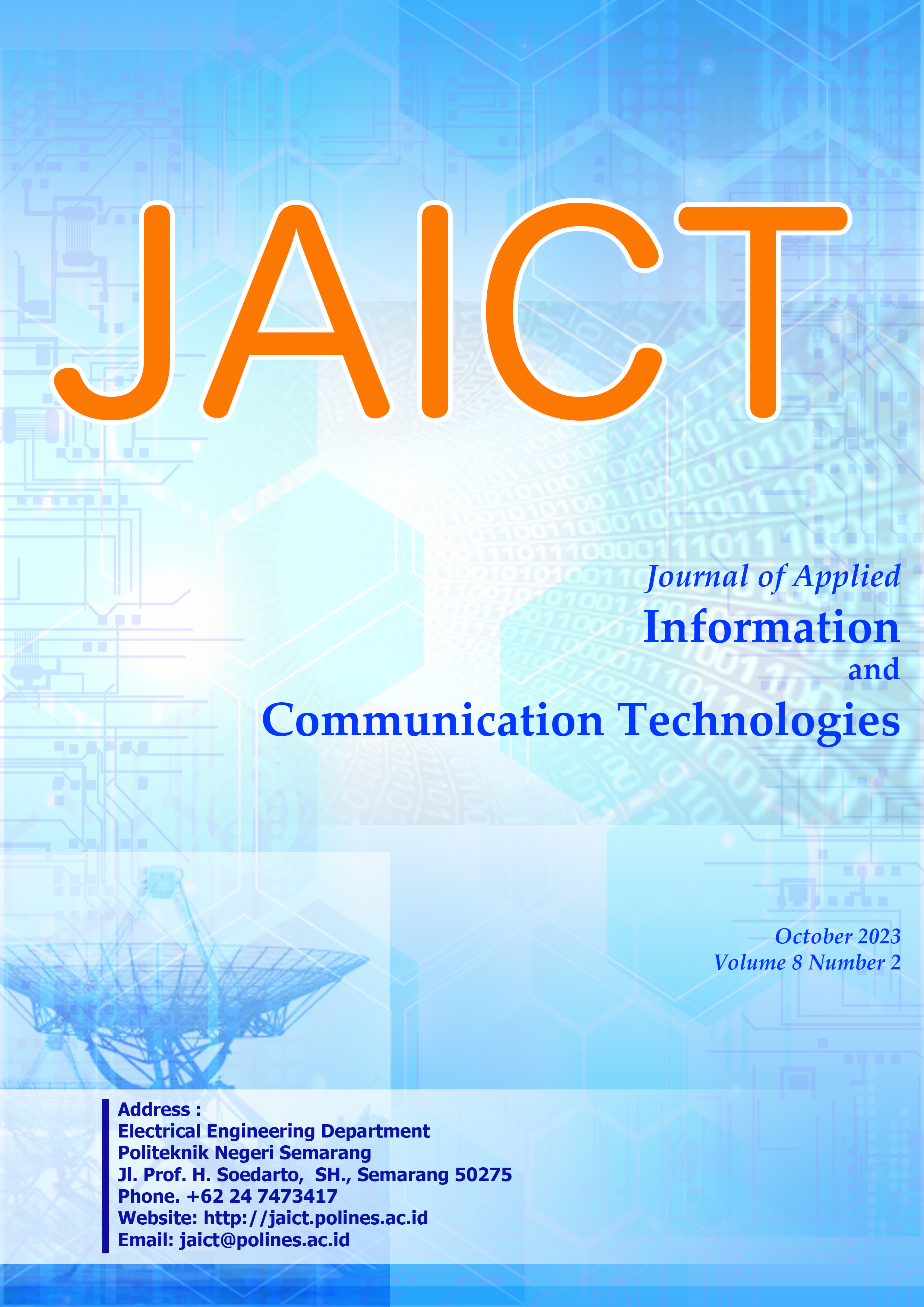Design of VHF Directional Antenna on Class B Automatic Identification System (AIS) for Vessel Traffic Monitoring
DOI:
https://doi.org/10.32497/jaict.v8i2.5017Keywords:
antenna, AIS, marine traffic, boatAbstract
The majority of Automatic Identification System (AIS) equipment used on ships, harbormasters, and monitoring stations utilizes antennas that possess an omnidirectional beam pattern, covering all directions in a 360-degree range. One limitation inherent to omnidirectional antennas is their susceptibility to signal dispersion, resulting in suboptimal signal gain in certain directions. In the context of using omnidirectional antennas at Port AIS stations or other Monitoring Stations situated in expansive terrestrial regions, it is observed that the monitoring range is reduced. The objective of this study is to develop a prototype of a directional antenna capable of enhancing the monitoring range of ship traffic monitoring stations in alignment with the specific direction requested by land-based monitoring stations. The approach being utilized is the prototype method. This methodology encompasses the sequential steps of data collection, material and issue identification, planning, modeling, building, testing, and implementation.
References
R. Haryadi, H. Setiawan, W. Hermawansyah, M. Masmilah, and S. Bani Saleh, “Sistem Penguraian Data Automatic Identification System (AIS) dengan Bahasa Pemrograman Python,” Semin. Nas. Rekayasa dan Teknol., vol. 27, no. November, pp. 18”“23, 2019.
T. Eriksen, G. Høye, B. Narheim, and B. J. Meland, “Maritime traffic monitoring using a space-based AIS receiver,” Acta Astronaut., vol. 58, no. 10, pp. 537”“549, 2006, doi: 10.1016/j.actaastro.2005.12.016.
A. Maulidi, “Disain Sistem Navigasi Automatic Identification System (AIS) Transceiver Berbasis Mini Computer Pada Kapal Nelayan Tradisional Di Madura,” Inovtek Polbeng, vol. 9, no. 1, p. 12, 2019, doi: 10.35314/ip.v9i1.878.
R. P. Sari, L. Lindawati, and S. Soim, “Monitoring Kapal Menggunakan Automatic Identification System(AIS) Dengan RTL-SDR dan Low Noise Amplifier (LNA),” PROtek J. Ilm. Tek. Elektro, vol. 9, no. 2, p. 119, 2022, doi: 10.33387/protk.v9i2.4691.
M. Masmilah, H. Setiawan, W. Hermawansyah, R. Haryadi, and S. Bani Saleh, “Rancang Bangun Sistem Monitoring Kapal Menggunakan Data Automatic Identification System (AIS) Dengan Geographic Information System (GIS),” Semin. Nas. Rekayasa dan Teknol., vol. 27, no. November, pp. 24”“29, 2019.
Y. W. Matrutty, Y. Saragih, P. Waluyo, and S. Suroyo, “Analisis Keberhasilan Automatic Identification System (Ais) Pada Kapal Tug Boat Leo Power 2206,” Power Elektron. J. Orang Elektro, vol. 11, no. 2, p. 266, 2022, doi: 10.30591/polektro.v12i1.3649.
Dwiyanto, A. Putri, and S. Jayani, “Analisis Posisi Antena Ais Untuk Misi Pemantauan Kapal Satelit Sar Mikro Lapan ( Analysis of Ais Antena Position for Ship Monitoring Mission of Lapan Sar Satellite ),” pp. 1”“14, 2019.
Downloads
Additional Files
Published
Issue
Section
License
Authors who publish with this journal agree to the following terms:Authors retain copyright and grant the journal right of first publication with the work simultaneously licensed under a Creative Commons Attribution License that allows others to share the work with an acknowledgement of the work's authorship and initial publication in this journal.
Authors are able to enter into separate, additional contractual arrangements for the non-exclusive distribution of the journal's published version of the work (e.g., post it to an institutional repository or publish it in a book), with an acknowledgement of its initial publication in this journal.
Authors are permitted and encouraged to post their work online (e.g., in institutional repositories or on their website) prior to and during the submission process, as it can lead to productive exchanges, as well as earlier and greater citation of published work (See The Effect of Open Access).






